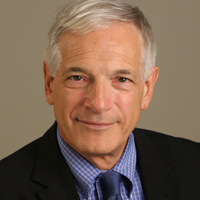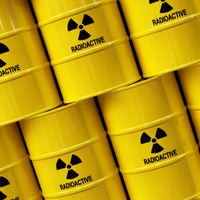Remarks as prepared for delivery.
The Nuclear Terrorism Threat
Good morning and thank you, Alex, for the warm welcome. We are grateful to you and Ken Luongo, the Fissile Materials Working Group, and the Stanley Foundation, for organizing this event. I am glad to be here today and look forward to a stimulating discussion.
Since just after our founding in 1978, the MacArthur Foundation has supported non-governmental experts and institutions around the world working to reduce the risk from nuclear weapons. Among other achievements, these grantees helped advance U.S.-Soviet arms control talks, launched the Cooperative Threat Reduction Initiative in the early 1990s, and generated plans you will be discussing here today to secure and eliminate fissile materials worldwide. That independent work has informed successive U.S. administrations as well as policymakers and the public worldwide. I am glad to see many of our grantees here today and want to assure you we consider your work a very good investment.
Defining the Threat: Is it real, for whom?
We are here today because, despite our collective best efforts, the global risks from nuclear weapons and nuclear terror, in particular, continue to loom large.
The first question to ask, and a good one, is whether nuclear terrorism is just a fantasy - the stuff of novels, movies, and sensationalistic television shows like the American series 24.
So let’s analyze how likely it is that a nuclear explosive device may be detonated in a major city by a non-national actor such as a terrorist group? (By “nuclear explosive device,” I mean an improvised or fabricated weapon powered by a nuclear reaction — not a Radiation Dispersal Device, powered by a conventional explosion.)
Classical strategists define threats as the product of an event’s magnitude and its probability.
Not much need be said about magnitude; just a little.
A Hiroshima-like device (using high-enriched uranium and a gun-type design) could produce a 12-kiloton explosion. If it were detonated in a major city at ground level, deaths could total from 80,000 to 200,000 depending on the precise yield, location, time of day, winds, and so on.
Casualties would include prompt deaths from burns, blast, and radiation, and additional deaths over four to six weeks from radiation effects.
These numbers do not include anticipated deaths from increased rates of various types of cancer over many years.
Clearly such a device could have a horrific effect on human beings, not limited to physical effects — also psychological trauma. It would also inflict substantial economic damage, which could have long-lasting, worldwide effects.
The magnitude of the threat, then, is considerable. But what is the probability of it happening?
Again, classical strategists would divide probability into two factors: the intent and the capability of the adversary.
Not much need be said about intent, either; just a little.
Al-Qaeda is the most likely non-national perpetrator. There is ample evidence of al-Qaeda’s intent to acquire weapons of mass destruction. They have a particular demonstrated interest in acquiring nuclear explosive capability.
So far, there is no evidence I know of that they have succeeded.
On capability, we must do some intelligent speculation on the basis of available evidence.
There are two possible routes to acquiring nuclear weapons for al-Qaeda.
First, they could buy or steal a weapon, or convince some country to one to them. Second, they could buy, steal, or convince some country to give them the necessary fissile material — highly enriched uranium or plutonium — and build their own improvised nuclear device.
Is either of these scenarios possible, plausible, or probable? I am certain both are possible and plausible.
But I think the chances of al-Qaeda acquiring fissile material and making its own improvised nuclear device are greater than the chances it will get an already fabricated weapon and detonate that. Nuclear weapons are far better secured and accounted for than is nuclear material in all states that have them.
That leads us to two questions: First, where would the fissile material come from? And, second, could al-Qaeda actually make an improvised nuclear device if they acquired the necessary high enriched uranium or plutonium?
It is possible that fissile material could leak from Russia or elsewhere in the former Soviet Union, or from Pakistan, or indeed any number of other countries that possess it. These include the U.K., France, Germany, India, South Africa, Japan, and the United States, among others.
Fissile material is most likely to leak from a state that has a lot of it, some of which may not be adequately secured, or from a state that has less, but must cope with internal threats from extremists and general instability.
Some fissile material has already gone missing; more could in the future.
Could a nuclear weapon be made by al-Qaeda? The challenge is not in the design, which is relatively easily obtained, but in the demands of precision manufacture — not easy. But a relatively simple gun-type design, like the bomb that was dropped over Hiroshima in 1945, could feasibly be constructed by a well-funded terror group if it had the necessary highly enriched uranium. Given time and purchased expertise and equipment, such a group might even be capable of building a far more challenging implosion design weapon using plutonium.
To summarize: I am persuaded it is possible, plausible, and over time, probable, for a determined and well-financed terrorist group to manufacture and detonate a nuclear weapon, causing enormous civilian casualties.
So who is at risk? There may be a perception that only the United States or Western European nations are likely targets. This would be a mistake. The detonation of a nuclear explosive device would be a major terrorist achievement and a terrible blow to the fabric of any society. It would critically undermine faith in governments and their security apparatuses.
I would say that any country that has suffered significant terrorist attacks from foreign or domestic actors needs to take this threat seriously.
Responding to the threat: What can be done?
So what can we do in response to a threat of this magnitude and likelihood? Historically, we have responded to the threat of nuclear attack by relying on deterrence.
In other words, we promise an enemy that should he attack, we will respond with devastating force. This sounds good; an even better approach would be to deny an enemy access to one’s territory so as to prevent the attack in the first place. But in an age of intercontinental ballistic missiles, this is not so easily done.
So, when dealing with other nation-states, we rely on deterrence because defense by denial is some place between hard and impossible, and because we assume that no nation is prepared to be annihilated.
But how does one deter an enemy who values your death more than his life?
Deterrence provides little security against the suicide bomber. But that does not mean that it is of no use at all. We may be able to deter states from transferring fissile material to terrorists and compel states to secure fissile material more effectively by threatening consequences for negligence, particularly if their material is used in an improvised nuclear device.
Of course this raises the question of whether we will know where the fissile material in an improvised nuclear device came from. Can we reliably determine the true source to deliver the threatened consequences?
On the state of the science in nuclear forensics, I can only say that some attribution is possible now, and more may be in the future. But relying on accurate attribution — the linchpin of an effective deterrence strategy — would not seem prudent.
So, if we cannot deter effectively, we must try to deny nuclear weapon armed adversary access to our territory.
This approach is not foolproof either. We should do what we can to secure our borders against the clandestine introduction of nuclear material. But we should not rely on detecting and capturing a bomb as it enters our territory.
We should, instead, look “up-stream” and deny terrorists access to the fissile material they need to make a bomb.
As we think about how to do this, we should remind ourselves just how hard a task this is. There is a large amount of fissile material already in existence: at least 1,600 metric tons of highly enriched uranium (HEU) and 500 metric tons of plutonium.
When you’re in a hole, you should stop digging. The first step to denying access is to stop producing any more HEU or separating any more plutonium.
The second step would be to secure existing fissile materials according to the “gold standard,” as Graham Allison puts it. For many governments, I understand this second step will have to come first.
And the third, would be to eliminate the fissile material by “blending down” the highly enriched uranium and disposing of the plutonium — irretrievably or retrievably in a way that makes it extremely difficult to access.
Some other observations follow from this prescription.
First, we should not limit our concern about the Iranian or North Korean nuclear programs to their acquisition of nuclear weapons. At least as great a concern is that either government might transfer fissile material to a terrorist group, not expecting that we would, in fact, be capable of tracing the origin of the material back to them if it were used in an improvised nuclear device.
For those of you who think this fanciful, please recall that North Korea secretly built a plutonium production reactor in Syria and suffered no negative consequences as a result. So why would they not sell a few Coke cans of plutonium or softballs of highly enriched uranium to al-Qaeda?
Second, those of you looking to nuclear power as an essential part of your energy strategy, make sure that plutonium recycling, in any form, is not part of your plans. Simply “spiking” the plutonium, for instance, will not do — it is too easily reversible.
Third, in the real world, credible information that illuminates a threat makes a big difference. More than any other threat we face, the threat of nuclear terrorism demands the sharing of operational intelligence between governments.
Finally, I think more people and governments would be inclined to cooperate and act to counter nuclear terrorism if they were persuaded that this threat is real. This morning, I have tried to make it real for you. The detonation of a nuclear explosive device would be the quintessential terrorist act of the 21st century. It poses a real and present danger to the security of nations around the world. We cannot allow our response to fall short of the dimensions of the threat.




